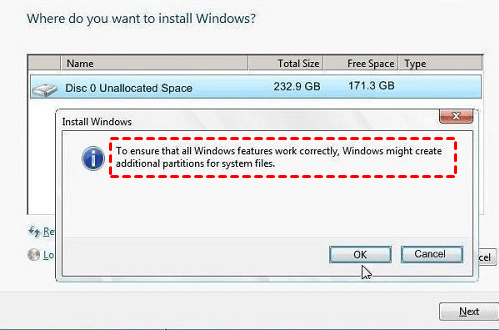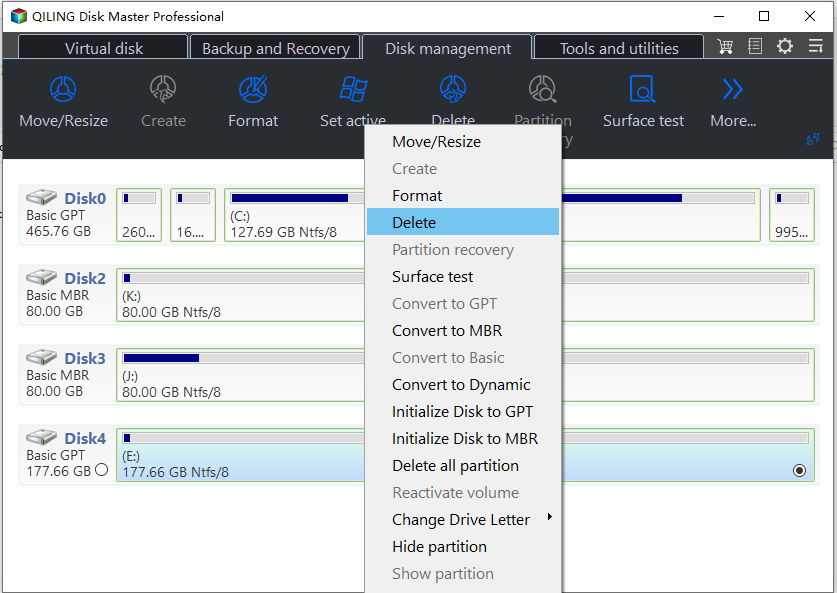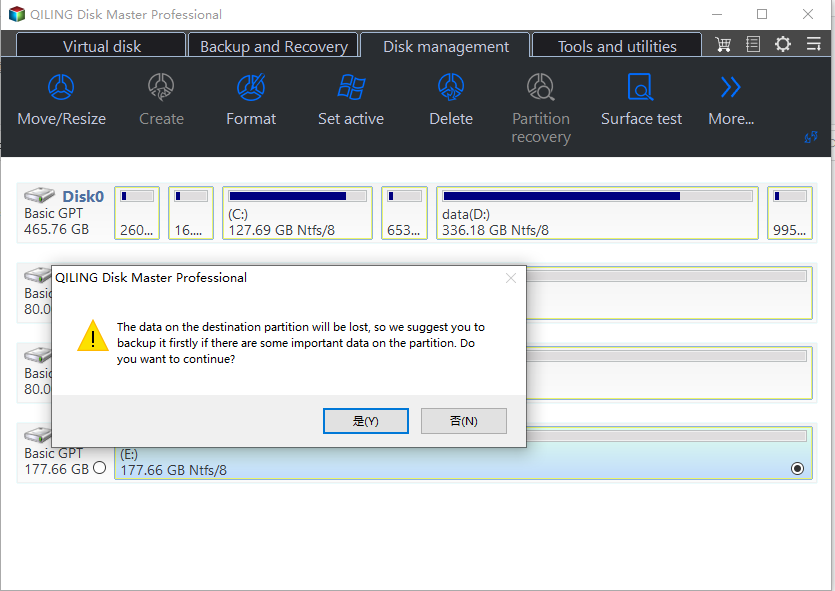How to Delete EFI System Partition in Windows 10,8,7?|Freeware
Some users want to delete EFI system partition for releasing disk space or other reasons, but they are afraid of losing important data. So what is an EFI system partition, what exactly is on this special partition, do you really need it and how can it be removed? Below we will give answers to those questions separately.
- What is an EFI system partition Windows 10/11?
- Can I delete EFI system partition?
- What happens if I delete EFI system partition?
- How to delete EFI system partition in Windows 10/8/7?
- How to recreate EFI system partition?
- Summary
What is an EFI system partition on Windows 10/11?
The EFI system partition is commonly known by its acronym ESP. It is a partition on a data storage device and used by computers that adhere to the Unified Extensible Firmware Interface. When the computer is booted, UEFI firmware will load the bootloader (EFI\Microsoft\Boot\bootmgfw.efi) from the EFI system partition to start the OS and other necessary utilities. It is always created during the OS installation. If you have ever installed Windows OS by yourself, you may receive the prompt at the Windows setup that tells it's going to create an EFI system partition for system files.
If you click "OK" at the prompt small window, you will get an EFI system partition, which is around 100MB in size, but only has data worth 30 MB. In the computer adopting the Legacy BIOS and MBR partition scheme, you will get a system reserved partition of the same size. This type of partition always contains 4 major components:
▶Boot loader (for all the installed OS);
▶Device Driver (for devices present in a computer used by the firmware during the boot time);
▶System utilities (that will run before an OS is booted);
▶Data files such as error logs.
Can I delete EFI system partition?
Is EFI system partition necessary? Can you delete it directly? From above, we can know that the EFI system partition stores boot files that are necessary to load Windows operating system successfully. That's why the EFI system partition is usually locked and protected by the Windows operating system against any potential accidental deletion. Therefore, you cannot see the EFI partition in Windows File Explorer unless you open the Disk Management. In one word, deleting an EFI partition is risky.
What happens if I delete EFI system partition?
As described above, the EFI partition works like an interface for the computer to boot Windows off. Without the EFI partition, you cannot boot your Windows successfully. Namely, it will make the installed system unbootable after deleting the EFI partition. If you persist in deleting the healthy EFI system partition, you should remember:
- Don't do anything to the EFI partition if you want your Windows to run smoothly.
- If you wish to delete the EFI partition and install a new Windows OS, you can directly reinstall the OS. Then, this partition will be automatically removed.
- If you have installed two Windows operating systems (two ESP have created) and you now plan to delete one of them, you can follow the below method to make it
- Things will be different if you want to delete the EFI system partition from an external hard drive (rather than the internal one).
How to delete EFI system partition in Windows 10/8/7?
To delete a partition from a hard disk, Windows native Disk Management is recommended. But when you try to delete ESP in Disk Management, you will find the Delete Volume option is grayed out. In this situation, you can switch to the free partition manager: Qiling Disk Master Standard. It allows you to remove the EFI system partition or system reserved partition within 3 steps.
1. Install and launch Qiling Disk Master Professional. Right-click the EFI system partition and select "Delete Partition".
Note: you can also select the wiping method to fill sector with zero, random data, or adopt the DoD 5220.22-M and Gutmann wiping solution (the last three advanced wipe methods are available in Pro edition).
2. A warning message will be showing, click "Yes" to continue.
3. Waiting for deleting the partition.
After removing the EFI system partition (ESP) successfully, it will turn into unallocated space, with which you can create a new partition or extend another partition. Using Qiling Disk Master Standard, you can also perform other tricky disk partition management tasks that cannot be done by Disk Management, such as:
☞Delete/Format C drive within simple steps;
☞Convert NTFS to FAT32 or FAT32 to NTFS while keeping inside data safe;
☞Format a large partition, which is over 32GB, to FAT32 file system;
☞Convert disk partition style between MBR and GPT without deleting partitions;
☞Merge unallocated space into an existing partition or merge two adjacent partitions;
How to recreate EFI system partition?
If you delete the EFI system partition by mistake and Windows 11/10 fails to boot now, you can upgrade to Qiling Disk Master Professional to restore EFI system partition, or use Windows installation DVD to recreate EFI system partition. Here we mainly discuss how to create a new EFI system partition with the Windows installation disk:
1. Boot your computer from the Windows installation media. Then press "Shift+F10" on the first screen to launch the Command Prompt window.
2. Then execute the following commands in the given order:
▪diskpart
▪list disk
▪select disk
▪list partition # (# is the number of the partition which has much unused space to be shrunk)
▪shrink size=500 (shrink the partition by 500MB)
▪create partition EFI size=200
▪format quick fs=fat32 label="System"
▪create partition msr size = 128 (MSR represents for the Microsoft Reserved Partition MSR)
▪bootrec /fixboot
▪bcdboot c:\Windows /s b: /f ALL (C is the volume letter of the Windows OS partition)
Note: On an EFI-only system, the "bootrec /fixboot" command is not necessary and the last command should be "bcdboot C:\Windows".
3. Now, you can remove the Windows installation media and restart your PC.
Summary
Now, you should know everything important about EFI system partition, how to delete EFI system partition as well as how to recreate ESP in Windows 11/10/8/7. If you want to delete such a similar partition on Windows Server, you can try Qiling Disk Master Server.
Related Articles
- 3 Things You Should Know about EFI System Partition (ESP)
An EFI system partition is typically created during the OS installation. What is it exactly, and is it OK to delete the ESP when you no longer need it? Here is a detailed explanation with guidance. - How to Repair EFI Bootloader on a GPT HDD in Windows 7/8/8.1/10?
If you are troubled by how to repair EFI bootloader on a GPT HDD in Windows 11/10/8.1/8/7, here you can learn 3 methods, all of which can help you repair EFI/UEFI bootloader on GPT hard drive. - Quick Fix: File:\EFI\Microsoft\Boot\BCD Error in Windows 7/8/10
Sometimes, you might meet the "File:\EFI\Microsoft\Boot\BCD Error code: 0xc00000f" error when booting Windows PC. In this below article, you can figure out how it comes and how to fix this error effectively.


